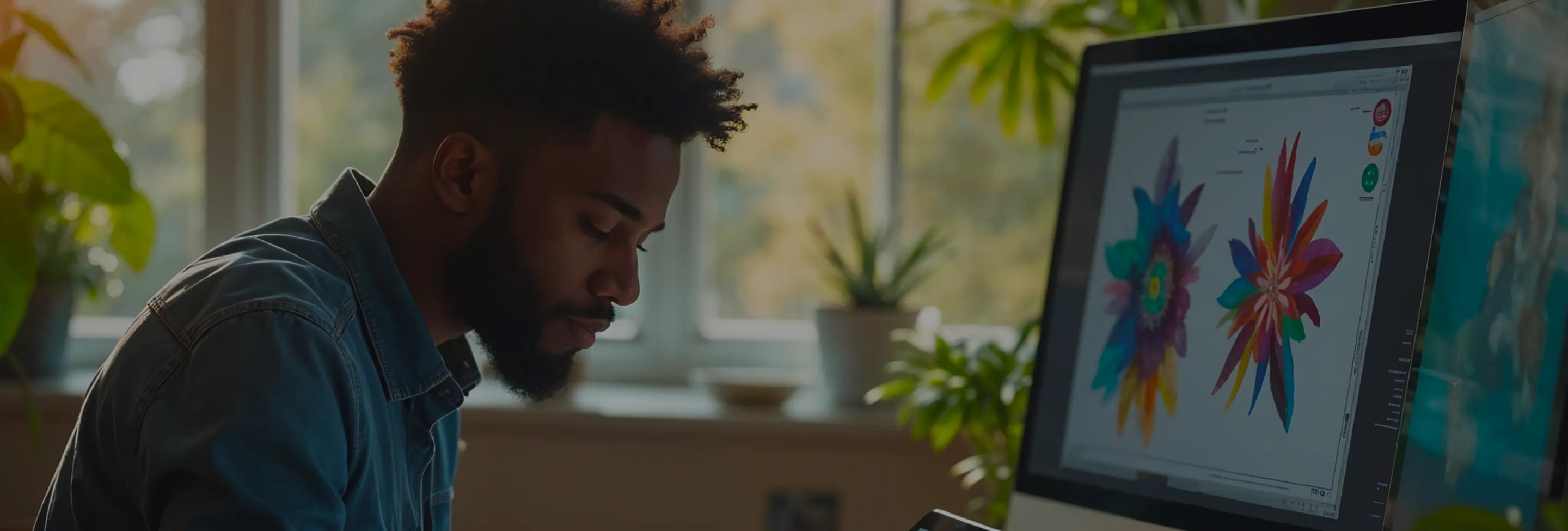
In examining over 3,000 graphic design projects from diverse industries, we identified the top 20 critical questions that shape successful design outcomes. These inquiries address the most common challenges designers and businesses face when selecting and utilizing graphic design products, ensuring you make informed decisions that enhance your creative workflow and project quality.
Q1: What are the key features to look for in a graphic design software?
A1: When selecting graphic design software, consider features that align with your specific needs:
Example: Adobe Illustrator is renowned for its robust vector tools and extensive plugin ecosystem, making it a favorite among professional illustrators and designers.
Common Misconception: Higher price doesn't always equate to better functionality. Evaluate features based on your needs rather than cost alone.
Q2: How important is software compatibility with other tools in a design workflow?
A2: Extremely important. Seamless compatibility ensures efficient workflows and minimizes disruptions. Key considerations include:
Example: Sketch offers excellent integration with prototyping tools like InVision, streamlining the transition from design to user testing.
Actionable Tip: Create a checklist of tools you currently use and ensure the graphic design software can integrate smoothly with them.
Q3: What customization options are available in top graphic design products?
A3: Customization enhances productivity and personal workflow. Look for:
Example: Affinity Designer allows users to customize keyboard shortcuts and workspace layouts, providing a tailored user experience.
Troubleshooting Tip: If a plugin causes software instability, disable it and update both the software and plugin to the latest versions.
Q4: How can graphic design products enhance collaboration among team members?
A4: Effective collaboration features include:
Example: Figma excels in collaboration by allowing multiple designers to work on the same file in real-time, with built-in commenting for seamless feedback.
Actionable Solution: Implement a cloud-based graphic design tool to facilitate easy sharing and collaboration among team members, reducing email back-and-forth and version confusion.
Q5: What are the different licensing options available for graphic design products, and how do they impact cost?
A5: Licensing options typically include:
Example: Adobe Creative Cloud offers a subscription model that provides access to the latest updates and a suite of integrated tools, ideal for professionals needing consistent access to new features.
Edge Case: Freelancers may find subscription costs burdensome and might prefer a one-time purchase option for budget management.
Actionable Tip: Assess your budget and usage needs to choose a licensing model that offers the best value, considering factors like required features and frequency of updates.
Q6: What are common performance issues with graphic design software and how can they be resolved?
A6: Common issues include:
Example: If Adobe Photoshop is running slowly, reducing the number of open layers and increasing allocated RAM in the preferences can significantly improve performance.
Troubleshooting Tip: Regularly update your graphic design software and system drivers to the latest versions to minimize compatibility and performance issues.
Q7: How can graphic design products improve creative workflows and efficiency?
A7: Enhancing creativity and efficiency can be achieved through:
Example: Canva's drag-and-drop interface and extensive template library allow designers to quickly create professional designs, enhancing both creativity and efficiency.
Actionable Solution: Implement automation workflows for repetitive tasks such as resizing images or applying consistent styles across multiple designs to save time and reduce errors.
Q8: How do you determine which graphic design product best fits your specific design needs?
A8: To determine the best fit, consider:
Example: Beginners might prefer Canva for its ease of use and extensive template library, while experienced designers may opt for Adobe Illustrator for its advanced vector capabilities.
Actionable Tip: Create a list of essential features you need and compare several graphic design products against this list, possibly starting with trial versions to assess usability and functionality.
Q9: Are there ways to customize and automate tasks in graphic design software to suit specific workflows?
A9: Yes, many graphic design software offer customization and automation options:
Example: Adobe Illustrator allows users to create custom scripts to automate repetitive tasks such as batch resizing images or exporting assets in multiple formats.
Configuration Sample:
// Sample Photoshop script to resize all open documents to 1920x1080
for (var i = 0; i < app.documents.length; i++) {
var doc = app.documents[i];
doc.resizeImage(1920, 1080);
doc.save();
doc.close();
}
Actionable Tip: Explore the scripting and automation capabilities of your graphic design software to identify tasks that can be streamlined, saving time and reducing manual errors.
Q10: What tools or features help maintain quality and consistency across multiple design projects?
A10: Tools and features that ensure consistency include:
Example: Adobe XD's asset management features allow designers to create and share reusable components and styles, ensuring consistency across multiple projects.
Actionable Solution: Develop a style guide and utilize master templates within your graphic design software to ensure consistency in branding and design elements across all projects.
By addressing these expert-curated questions, you can navigate the complexities of choosing and using graphic design products effectively. Whether you're a seasoned designer or just starting, understanding these critical aspects will empower you to enhance your creative process and achieve outstanding design results.




Subscribe to our newsletter to receive $100 off your first month of Tapflare's flat rate unlimited design and development service. Your coupon code will be sent to your email.